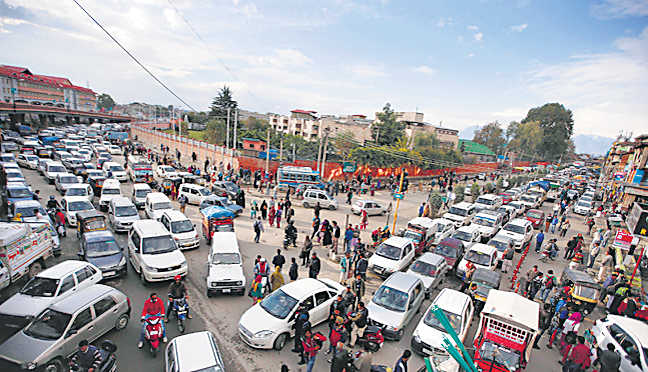Navigating Srinagar’s Smart City Odyssey: A Tale of Challenges and Solutions
By: Javid Amin
Srinagar, the jewel of Kashmir, is embarking on a transformative journey toward becoming a Smart City. This endeavor holds the promise of a brighter future, with enhanced infrastructure, sustainable development, and improved quality of life for its residents. However, recent developments have cast a shadow over this vision, raising questions about the efficacy of its execution.
The Squeezed Streets: A Bottleneck for Progress
As the Smart City project unfolds, one of the most glaring issues plaguing Srinagar is the narrowing of its roads. Instead of expanding thoroughfares to accommodate burgeoning traffic, some areas have witnessed a perplexing reduction in lane space. This unsettling trend has ushered in a host of challenges:
Increased Traffic Congestion: The constricted roads struggle to cope with the existing traffic load, resulting in daily snarls and frustrating delays for commuters. Unnecessary Chokepoints: The addition of superfluous pathways only exacerbates the traffic woes, creating bottlenecks and further impeding the flow of vehicles. Safety Concerns: Pedestrians, cyclists, and motorists navigate these cramped spaces amidst heightened safety risks, raising alarms about the overall well-being of road users.
The Digging Dilemma: Unplanned Upheavals
Another sore point in Srinagar’s Smart City narrative is the erratic nature of road excavations. Residents have voiced their grievances over:
Lack of Proper Planning: Construction activities appear disjointed, with roads being dug up without a clear roadmap for completion. This prolonged disruption disrupts daily routines and business operations. Waterlogging Woes: Inadequate drainage systems during construction lead to water stagnation, transforming dug-up areas into breeding grounds for inconvenience, safety hazards, and health risks. Unanswered Questions: The community seeks clarity from authorities regarding the rationale behind these excavations and the broader construction blueprint.
Who’s in Charge? Finding Accountability
At the heart of this discourse lies the imperative of transparency and accountability. Srinagar’s residents demand answers to critical questions:
The Rationale Behind Road Narrowing: Was a comprehensive traffic analysis conducted prior to road narrowing? Are alternative solutions being explored to alleviate traffic congestion? Planning and Consultation: Were stakeholders adequately consulted before construction commenced? Is there a platform for addressing public grievances and incorporating community feedback? Timeline and Transparency: Can citizens be furnished with a definitive timeline for project completion, along with a commitment to restoring dug-up roads and implementing drainage systems?
A Way Forward: Building a Smart City with Smart Solutions
Despite the current challenges, the vision of a Smart City holds immense promise for Srinagar. Here are actionable steps to realign the project trajectory:
Prioritize Traffic Flow: Reassess road design plans to prioritize wider lanes and implement robust traffic management strategies. Community Engagement: Foster open dialogue with residents and businesses to solicit feedback, address concerns, and ensure project transparency. Sustainable Infrastructure: Embrace sustainable construction practices, including the integration of efficient drainage systems and adherence to clear construction timelines. Smart Technology Integration: Leverage smart traffic management systems to optimize traffic flow and enhance overall infrastructure efficiency. Environmental Considerations: Infuse eco-friendly practices into construction methodologies, promoting the use of recycled materials and the creation of green spaces.
Building a Smart City for the People
Srinagar’s pursuit of Smart City status warrants collective support and collaboration. By acknowledging present challenges, nurturing transparent communication channels, and implementing solutions that prioritize traffic alleviation, infrastructure enhancement, and environmental stewardship, the project can chart a course toward a more inclusive and prosperous future.






